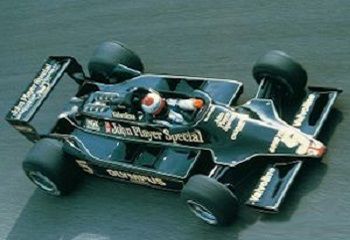Italian-American racing driver Mario Andretti declared the Lotus 78 drove “like it was painted to the road,” and proved this Formula One car’s uncanny winning streak by driving it to four victories in 1977.

Lotus 79 1977
- YEAR REVEALED 1977
- PLACE OF ORIGIN Hethel, Norfolk, UK
- HISTORICAL STATUS Formula One racing car
- ENGINE V8-cylinder, 183ci (2,993cc)
- MAXIMUM POWER 480bhp
- LAYOUT mid-mounted engine driving the rear wheels
- BODYWORK single-seater racer
- TOP SPEED approximately 180mph (289kph)
- NUMBER BUILT six
But after trying its successor, the 79 with 30 percent extra downforce, he declared the old car felt “like a London bus” by comparison. In 1978, the 79 helped him to the drivers’ World Championship.
The Lotus 78 had pioneered “ground effect” aerodynamics in Formula One after Lotus founder Colin Chapman and his design team discovered that sidepods shaped like inverted aircraft wings could form venturi tunnels on either side of the narrow chassis.
This created a vacuum that literally sucked the car on to the tarmac. Wind tunnel experiments using a rolling road produced amazing results, which were replicated on the test track using a stiff suspension to maintain a ground-hugging stance. Flexible, sliding rubber skirts stopped destabilizing air being drawn in from the sides.
The 79 brought a radical rethink. The whole car was now one giant “ground effect” venturi. The bodywork was extended back between the rear wheels, and the suspension redesigned, so that low pressure was evenly spread along the car’s underside.
This improved grip, and meant a relatively small rear aerofoil was required, causing less drag. The 79 was one of the most elegant Formula One designs ever; together with its John Player Special livery, this brought about its nickname of “Black Beauty”.